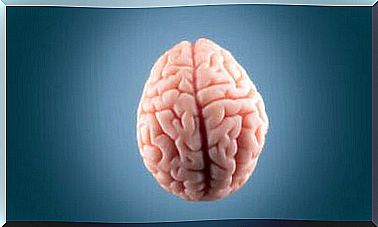3 Types Of Learning Strategies That Help With Studies

Meaningful learning depends as much on the learning process as it does on how the student handles learning. Educational psychologists have spent a lot of time thinking about both of these aspects and have come up with theories that make them better. In this article we will talk about types of learning strategies.
The main goal of its types of learning strategies is to make students better at learning. The research that has been done on the subject has shown us many different ways to do this. But the three most famous learning strategies are mnemonic, structural and generative.
Types of learning strategies: mnemonic strategies
Mnemonic learning strategies help the student memorize content, such as facts or terms. They are useful, for example, to be able to remember capitals, important dates, vocabulary, etc. Since you have to memorize “meaningless” information, mnemonic strategies are a good way to give it a certain meaning.
The usability of mnemotechnical units is something that the research world has agreed has been used for a long time. Psychologist Allan Paivio explained that these devices work for three reasons:
- Dual coding: many involve non-verbal codes (pictures) along with verbal (words). This means that the same content gets two different codes. According to the principles of connectionism, this means that it will be easier for the student to access the information.
- Organization: these strategies also create a consistent box to place the information in. It helps students to hold together all the related information instead of dividing it. For example, it will be easier for you to remember a list of words if you make sentences with them.
- Association: Creating strong connections between different elements is also a strategy that creates meaningful learning. Strong associations are important because when you see one of the two things, it will be easier to remember the other.

An example of a mnemonic strategy is the keyword method. This method is especially useful for learning a confusing vocabulary in another language. It involves phonetic and image-based connections, along with a detailed explanation.
Structural strategies
Structural strategies stimulate active learning by encouraging students to mentally grasp important information and use it to create a structure. This is where you will see techniques such as conceptual maps, flow charts, etc.
Of course, it is not enough for the teacher to just tell the students that they have to make, for example, these conceptual maps. They will only be useful if the student knows how to do them. The most difficult part of teaching them how to do it is to show them how to choose the important thing in a text or presentation.
It will not be long before you see the effect that these techniques have on learning. When you organize course materials into small, related ideas, it is easier to access this information later. And when you make strong associations between these ideas, it is always easier to reach the rest of the information in memory.
Research has shown that students who use these techniques also succeed better. They help the student to really understand the content. You can see the value of using these strategies in the classroom!
Generative strategies
With the other two strategies, we looked at how they help students remember specific facts and organize them into structures. These are techniques that are used when you need to learn new information. But another important part of learning is to integrate new knowledge into the already existing knowledge. This is where the generative strategies come in.
EZ Rothkpof calls these activities where students gain knowledge for “mathematical activities”. Some examples of this are taking notes, underlining and answering questions or saying things out loud. They help the student to reach a deeper understanding because they force the person to bring in new knowledge.

Many psychologists see active learning as students who associate different ideas. This is why generative strategies are such a great tool for getting students to use this type of learning. Showing students how to take notes or ask them questions will help them understand and absorb new information.
In this article, we have explored different learning strategies that can be extremely useful in the classroom. Scientific research on learning and education can help you achieve the kind of learning you want your students to have. It would have been a big mistake not to follow the guidelines and the evidence that educational psychology has given us.









